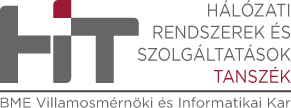Design of a Multi-Parameter Soil Sensing and Sampling System for Legged Robots
Precision agriculture requires real-time monitoring of soil parameters such as moisture, pH, and nutrients. Traditional sampling is labor-intensive, slow, and limited in coverage. Embodied intelligent robots, including all-terrain and quadrupedal platforms, can autonomously navigate fields while carrying multi-sensor payloads for real-time soil data collection. Advances in robotic sensing, AI navigation, and distributed communication enable efficient, large-scale multi-parameter soil monitoring.
This thesis aims to design a modular robotic system for multi-parameter soil sensing, integrating sensors such as moisture, conductivity, pH, multispectral imaging, and LiDAR. The system will support autonomous navigation, real-time data acquisition, and wireless communication, with non-invasive sensing. Expected outcomes include an operational soil monitoring framework, improved efficiency, and insights into optimal sensor configurations and data collection strategies.
Tasks to be performed by the student will include:
· Present a literature review of agricultural robotics for soil monitoring, sensor integration strategies, and autonomous navigation systems.
· Study and evaluate sensor configurations for measuring soil moisture, conductivity, pH, and other chemical parameters.
· Design and integrate a modular sensor platform on a ground-based or quadrupedal robot for multi-parameter soil sensing.
· Develop data acquisition, communication, and processing pipelines, incorporating AI-based navigation and real-time decision-making.
· Verify system performance in laboratory and field trials, evaluating accuracy, coverage, and operational efficiency.
· Analyze results to determine optimal sensor placement, modular configuration, and integration strategies.
Note:Applicant will use publicly available datasets and receive technical support from SZTAKI. Simulation-based validation is acceptable if full-scale field experiments are limited.
Supervisor at the department: Dr. Chang Liu, Assistant Professor
External supervisor: András László Majdik, Ph.D., HUN-REN SZTAKI.

